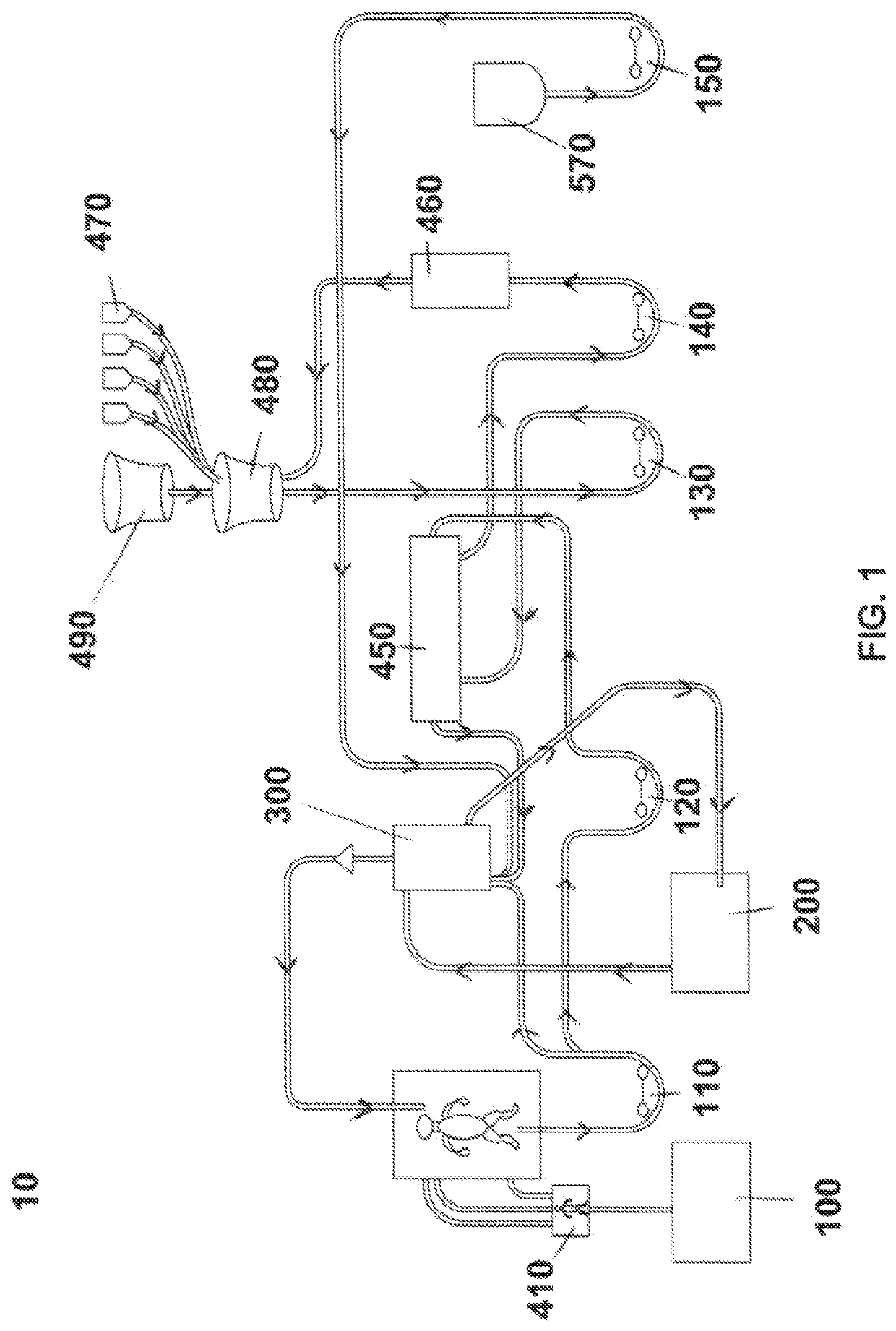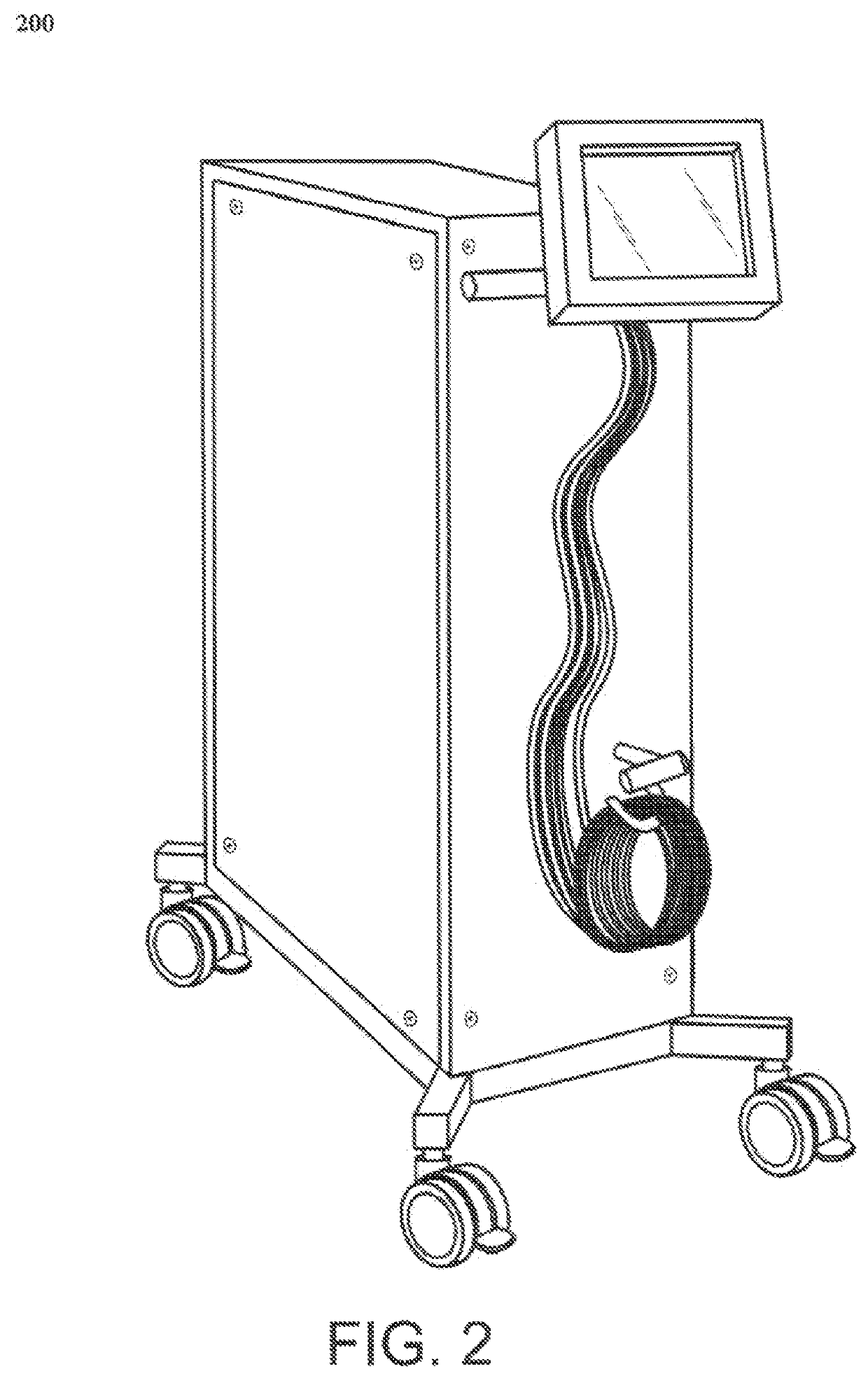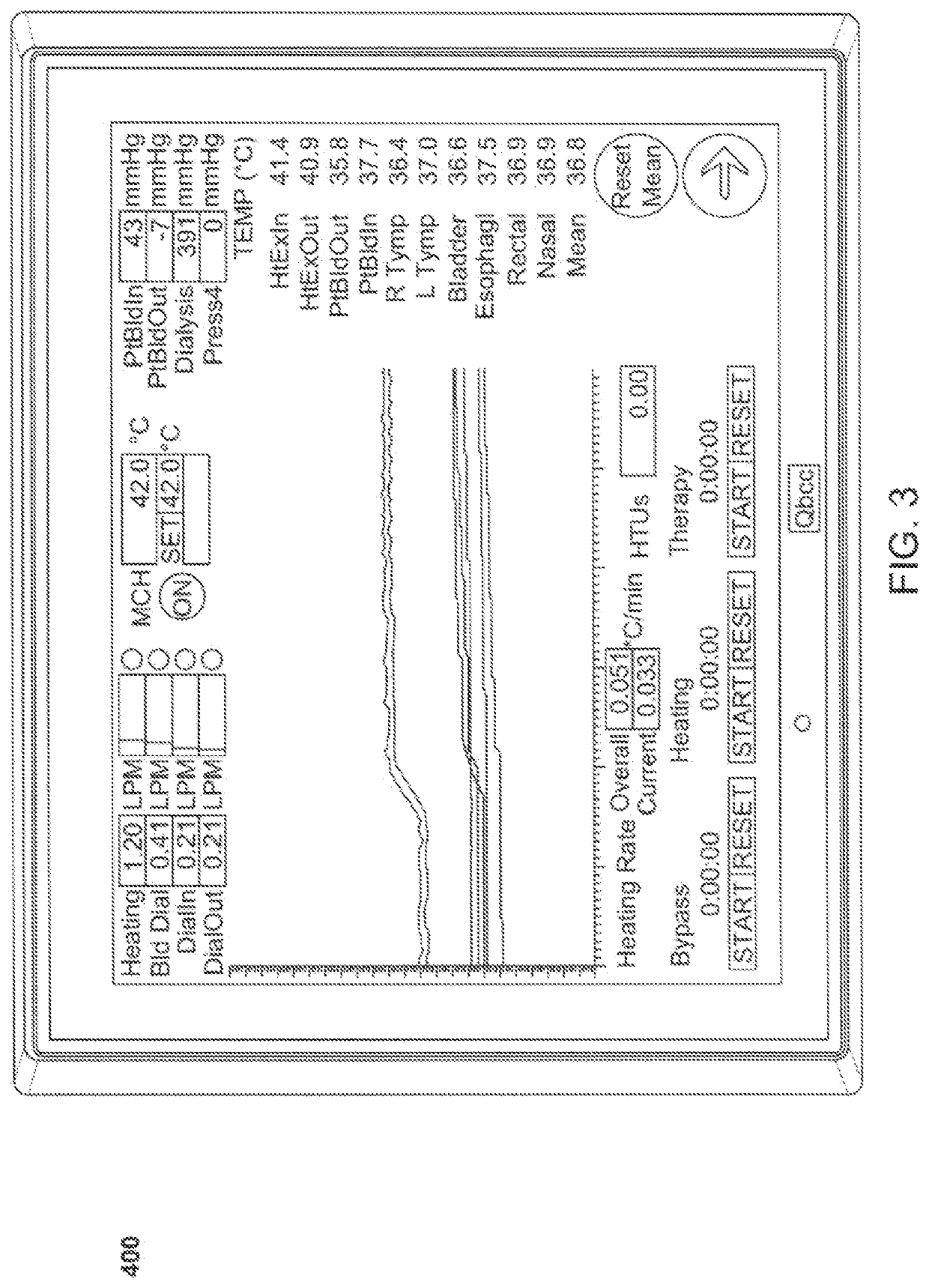Method and system for controlled hyperthermia
a hyperthermia and controlled technology, applied in the field of medical methods and devices, can solve the problems of patients' injuries, patients' severe injuries, and outdated methods of providing extracorporeal heating to the patient's blood, and achieve the effect of reducing the temperature of water and the heating ra
- Summary
- Abstract
- Description
- Claims
- Application Information
AI Technical Summary
Benefits of technology
Problems solved by technology
Method used
Image
Examples
Embodiment Construction
[0057]Specific embodiments of the disclosed device, delivery system, and method will now be described with reference to the drawings. Nothing in this detailed description is intended to imply that any component, feature, or step is essential to the invention.
[0058]A flow diagram for the Hyperthermic Treatment System (HTS) 10 of the present invention is provided in FIG. 1. Non-disposable components of the HTS include a standard heart-lung machine 100FIG. 7 having four or five pump heads. The main pump 110 on FIG. 1 moves the blood through the HTS circuit. A second pump 120 on FIG. 1 pumps blood through the dialysis circuit. A third pump 130 in FIG. 1 removes the dialysis fluid from the main dialysis reservoir and pumps it through the dialyzer 450. A fourth pump 140 in FIG. 1 draws the dialysis fluid out of the dialyzer and pumps it through the carbon sorbent column and into the bottom main dialysis reservoir. An optional fifth pump 150 in FIG. 1 is used to give additional volume into...
PUM
 Login to view more
Login to view more Abstract
Description
Claims
Application Information
 Login to view more
Login to view more - R&D Engineer
- R&D Manager
- IP Professional
- Industry Leading Data Capabilities
- Powerful AI technology
- Patent DNA Extraction
Browse by: Latest US Patents, China's latest patents, Technical Efficacy Thesaurus, Application Domain, Technology Topic.
© 2024 PatSnap. All rights reserved.Legal|Privacy policy|Modern Slavery Act Transparency Statement|Sitemap



